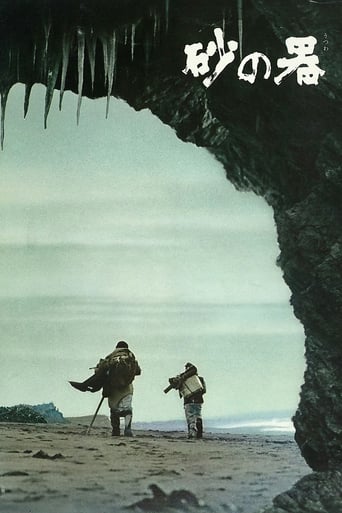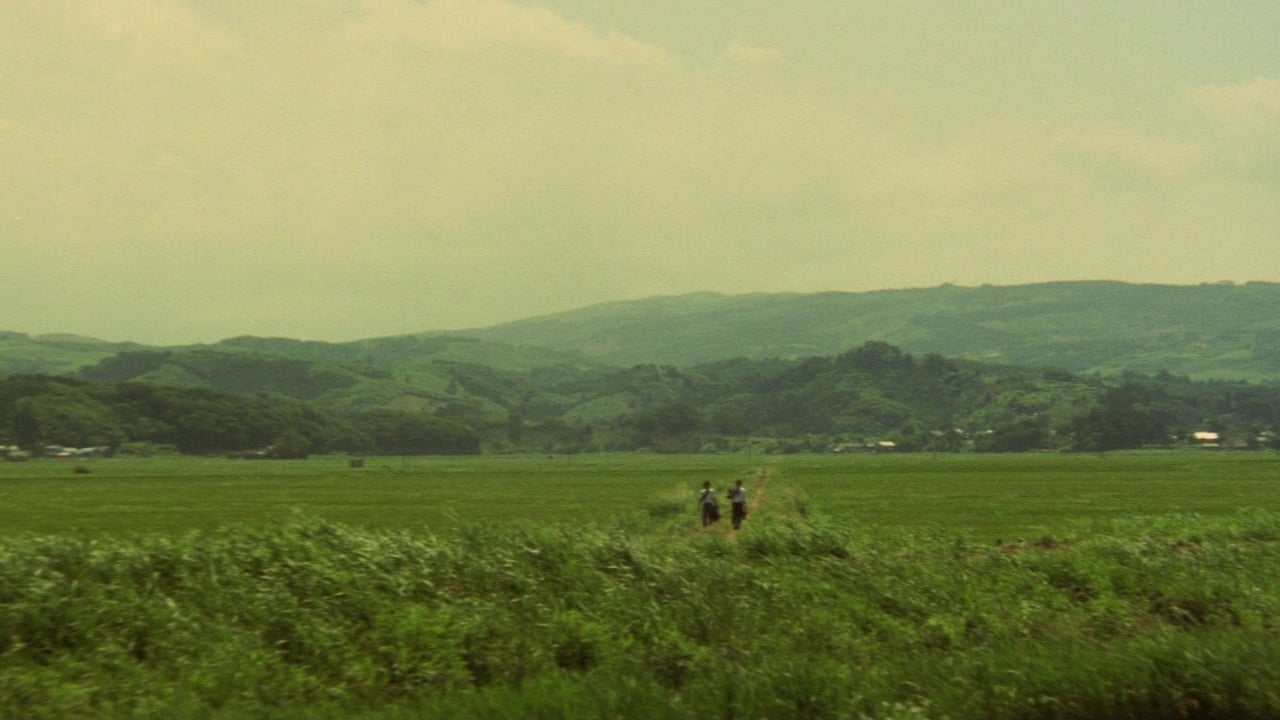WILLIAM FLANIGAN
The Castle of Sand / Container of Sand (Lit.) (Suna No Utsuwa). Viewed on Streaming. Music = ten (10) stars; cinematography/lighting = eight (8) stars; subtitles/translations = six (6) stars. Director Yoshitarô Nomura again displays his fascination with crime mysteries, trains, and rural Japan (in a way, this film looks like a mini Honshu travelogue of many places tourists may never see). The Director's tale primarily comprises a mash up of: unrelenting, investigative work by homicide police detectives; the creation and performance (by a 60-member symphony orchestra) of a piano concerto; and the lingering prejudice against noninfectious leprosy suffers. Nomura uses a common plot device where seeming remote and unrelated events turn out to be tightly coupled. The film is too long. It loses it's dynamic punch when 20-30 minutes of symphonic music is inserted at the end of the film (it's just too much of a good thing and plot-point overkill). This brings a suspenseful final police evidence review meeting (prior to an arrest warrant being authorized and issued for the concerto's creator/ conductor) often to a stand still (there is much cross-cutting between the concert and the stalled review meeting). A poorly executed contrivance that almost sinks a heretofore well crafted suspense movie! (And far removed from, say, Hitchcock's symphonic suspense scenes in THE MAN WHO KNEW TOO MUCH (1934, 1956).) Acting is fine except for the histrionics of the fake conductor. Distinguished character actor Chishû Ryû makes a welcomed cameo (albeit crucial) appearance. Narrative in the form of on-screen text is surprisingly effective: it adds value as opposed to being a "quick and dirty" way to link disparate scenes during the editing process. Cinematography/lighting (wide screen, color) are excellent and include striking forward/reverse zoom shots. Original/adapted music is outstanding. Subtitles are occasionally a bit too long given their screen duration. Writings (of which many are shown on screen) are usually not translated. Same for many newspaper article subheadings. A cinematic treat. Highly recommended. WILLIAM FLANIGAN, PhD.
Kicino
I just finished The Castle of Sand and could not wait to write down how I feel. It is such a classic and so rich in the Japanese culture that I need to share soonest. A suspense murder story on the surface, The Castle of Sand explores the theme of destiny and invites audience into this Eastern concept. It is full of irony which I will elaborate later. The film opened in a small town Northeast Japan, which quickly drew me to imagine how this little town would have looked like before the tsunami last March and how it is recovered now. But it quickly shifted focus to other clues of a murder case which took detectives Imanixi and Yoshimura (Tetsurou Tanba and Kensaku Morita) all over Honshu to search for further details. We were taken on a journey to travel with them to the beautiful Japanese countryside and experience their hospitality in the summer heat. By the way, Tetsurou Tanba was very sexy when he rolled up his sleeves and worked hard! The victim of the murder, Miki Kenji (Ken Ogata), a retired policeman who was loved by everyone in the village, had only done decent deeds all his life. No one believed he had any enemy but he was murdered and his body dumped in Tokyo. When detective Imanishi interviewed Miki's colleagues and friends, we almost see the famous Japanese poet/humanist/teacher Kenji Miyazawa alive: he saved a kid from the fire, carried a sick person to the hospital and sent a sick beggar to the hospital while taking care of his son. I believe the scriptwriters Shinobu Hashimoto and Yoji Yamada were paying tribute to Miyazawa for his humanism when he named this beloved policeman as Kenji who shared the same caring characters of the great writer.Without divulging too much of the plot, destiny was defined in the film as "being born and being alive" by one of the characters. This can be interpreted in both a positive and negative way – that we enjoy the moment we have and be thankful that we are alive, i.e. accept fate; or that as long as we were born, we have to try hard to stay alive and ahead at all costs. No matter which option we choose, our lives, or whatever we have accumulated, are like the castle of sand which might look magnificent for a while but it will eventually be crumpled and washed away. Therefore, all of our efforts are futile because our fate is already determined. Power, fame, wealth, even love, whatever we desire, will be gone – which is quite a Buddhist philosophy.What was ironic was the contrast between the friendly hospitality the detectives enjoyed and the sneers by the country people the leper father and his son faced as they roamed and begged all over the country. Another irony was in the second half of the film when the beautiful Japanese countryside in snow, under cherry blossoms, by the sea, and in the mountains was depicted with the roaming father and son struggling in the foreground. No dialogues were necessary (they are male and Japanese!). Yet the passionate piano concerto vividly portrayed their sadness, loneliness, abandonment and strong bonding. It was beautifully overlaid by the performance of the up and coming composer Eriyo Waga (Gou Katou) while he reflected painfully on his past.I have not read the original novel by Seichou Matsumoto and I intend to do so. Duration is 143 minutes but did not feel long at all because you will be full absorbed into the search, the enjoyment of the scenes and the sadness felt by each character. This film is a classic as the morals from the story remains valid today: the coldness and avoidance of the villagers to lepers/beggars remind me of the bullying of residents from the Fukushima area. Years pass, seasons change; scenery, prejudice, hospitality and solidarity stay. Ganbare, Nihon!
Drucilla_Black
I saw "The Castle of Sand" at a Japanese Film Festival this year in Sydney, and I must say that I'm surprised that this movie isn't better known as it's so beautifully made and incredibly moving...It's one of those near-perfect gems that are few and far between. It's a fairly long movie at nearly 2.5 hours, but the movie is one that draws you in very quickly and keeps you wondering up until the very end.The plot centres around the mysterious murder of Miki, a retired policeman in his 60's who was well-liked by pretty much everyone who knew him for his kindness and integrity. Two detectives, one a rookie and one fairly older, are assigned to the case and what at first seems like three unrelated stories slowly weave together to reveal the reasons and the person behind Miki's death. Even if you're not a fan of foreign movies, "The Castle of Sand" is still definitely worth a watch.
noirfilm
At first, I thought this was going to be a standard murder-mystery story. A police detective doggedly pursues slim clues all over the map to find a murderer. However, when the events which led up to the crime are revealed through flashbacks, the story takes an emotional turn which even brings tears to the detective's eyes. Like most Japanese movies, it starts slowly but comes alive at the end. I recommend it.


 AD
AD




